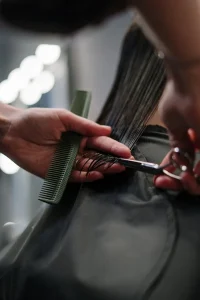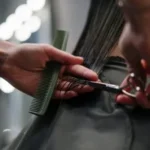Hairdresser Jobs in the USA with Visa Sponsorship
The beauty and personal care industry in the United States is a thriving sector, with hairdressing being one of its most essential services.
Salons across the country are constantly in search of skilled professionals who can cater to a diverse clientele with modern styling, coloring, and grooming techniques. With growing demand and an increasing labor shortage in some regions, many U.S. employers are opening up opportunities to international candidates through visa sponsorship. For foreign-trained hairdressers, this presents an exciting pathway to live and work in the U.S., but it requires navigating a detailed process and overcoming some key challenges.
The Process of Applying for Hairdresser Jobs with Visa Sponsorship
1. Meeting Basic Qualifications
Before applying for jobs, international hairdressers must ensure they meet the general qualifications expected in the U.S. These typically include:
- Formal education or certification in cosmetology or hairdressing.
- A certain number of hours of practical training (which varies by U.S. state).
- English proficiency to effectively communicate with clients and colleagues.
- Experience in hairstyling, cutting, coloring, and possibly additional skills such as braiding or barbering.
In the U.S., every state requires hairdressers to be licensed, so foreign workers will usually need to meet state-specific licensing requirements upon arrival.
2. Finding a Sponsoring Employer
To apply for a job with visa sponsorship, foreign hairdressers must find a salon or beauty franchise willing to sponsor them. These employers are typically:
- Upscale salons in major metropolitan areas.
- Chain salons with multiple locations.
- Employers in regions experiencing a shortage of licensed stylists.
Job search platforms, international recruitment agencies, and industry-specific websites often list sponsorship opportunities.
3. Visa Options for Hairdressers
While hairdressing doesn’t fall under highly specialized professions, there are still pathways for foreign workers, such as:
- H-2B Visa (Temporary Non-Agricultural Worker):
Allows employers to hire foreign workers for temporary or seasonal roles. This visa is ideal for short-term positions in salons with fluctuating demand. - EB-3 Visa (Employment-Based Third Preference):
Offers permanent residency for “unskilled” or “skilled” workers, depending on qualifications. Hairdressers may qualify under the “unskilled worker” category if an employer is willing to sponsor for a green card.
4. Visa Application Steps
Once a job offer is made:
- The employer applies for labor certification through the U.S. Department of Labor.
- They submit the visa petition (Form I-129 for H-2B or I-140 for EB-3) to U.S. Citizenship and Immigration Services (USCIS).
- The applicant attends a visa interview at a U.S. embassy or consulate and submits necessary documents including qualifications, job offer letter, and identification.
Benefits of Hairdresser Jobs with Visa Sponsorship
1. Legal Work Authorization
Visa sponsorship enables foreign hairdressers to work legally in the U.S., providing job security and legal protections under American labor laws.
2. Competitive Compensation
Depending on location, hairdressers can earn between $30,000 to $60,000 annually, plus tips. High-end salons in cities like New York, Los Angeles, and Miami often offer even higher earning potential.
3. Opportunity for Permanent Residency
The EB-3 visa provides a direct path to a green card, allowing long-term residency and the possibility of U.S. citizenship.
4. Access to Professional Development
Working in the U.S. exposes international stylists to modern techniques, tools, and trends, enhancing their professional skills and global marketability.
5. Cultural Exposure and Lifestyle Benefits
Living in the U.S. offers exposure to diverse cultures, client preferences, and a new way of life—ideal for personal and professional growth.
Challenges in the Application Process
1. Licensing Barriers
Each U.S. state has its own licensing board, and foreign credentials may not always transfer directly. Most states require passing written and practical exams before being allowed to work.
2. Limited Visa Availability
The H-2B visa is capped at 66,000 per year, making it a competitive route. Employers must also prove that no local workers are available for the role, adding complexity.
3. Employer Dependency
Visa-sponsored workers are often tied to the employer who sponsors them. Switching salons requires starting the sponsorship process over again.
4. Cost and Time
The visa process involves legal fees, exam costs, and documentation, which can be financially and emotionally taxing. Processing times may also delay start dates.
5. Cultural and Language Adjustments
Understanding client expectations, slang, or regional style preferences can be a hurdle. Strong English skills are vital for client interactions and passing licensing exams.
Summary
Hairdresser jobs in the USA with visa sponsorship offer skilled international professionals a chance to advance their careers in a dynamic, well-paying market.
While the process requires patience, licensing compliance, and adjustment to a new work environment, the benefits including legal employment, professional growth, and a pathway to permanent residency are substantial. With preparation and persistence, foreign-trained hairdressers can thrive in the U.S. beauty industry.






